Effect of Temperature on Densification Pressure and the Unit Density in Production of Corn Straw Pellet with a Post-Heating Method
Abstract
:1. Introduction
2. Materials and Methods
2.1. Materials Preparation
- Divide the material into three parts, and dry them for a week.
- Use the rapid moisture meter to figure out the moisture of the biomass. Then calculate how much water should be added to the biomass.
- Mix the materials and the water uniformly through keeping them in the packaged plastic bag for 3 days.
- Repeat the third process until the moisture is as needed.
2.2. Pellet Production Method
2.3. Force Analysis during Densification Process
2.4. Densification Pressure Test
2.5. Pellet Density Test
3. Results and Discussion
3.1. Pelle Quality Affected by the Die Temperature
3.2. Densification Pressure of Every Single Pouch
3.3. Average Densification Pressure Affected by the Die Temperature
3.4. Pellet Density Affected by the Die Temperature
4. Conclusions
Author Contributions
Funding
Institutional Review Board Statement
Informed Consent Statement
Data Availability Statement
Acknowledgments
Conflicts of Interest
References
- Dovlatabadi, S. Effects of kenaf filler reinforcement on mechanical properties of molded polypropylene composites: A particle size study. Polym. Renew. Resour. 2020, 11, 64–68. [Google Scholar] [CrossRef]
- Karami, Z.; Zohuriaan-Mehr, M.J.; Kabiri, K.; Ghasemi Rad, N. Bio-based thermoset alloys from epoxy acrylate, sesame oil- and castor oil-derived resins: Renewable alternatives to vinyl ester and unsaturated polyester resins. Polym. Renew. Resour. 2019, 10, 27–44. [Google Scholar] [CrossRef]
- Han, L.; Ma, F.; Chen, S.; Pu, Y. Effect of short basalt fibers on durability, mechanical properties, and thermal properties of polylactic acid composites. Polym. Renew. Resour. 2019, 10, 45–59. [Google Scholar] [CrossRef]
- Khan, M.; Rahamathbaba, S.; Mateen, M.A.; Ravi Shankar, D.V.; Manzoor Hussain, M. Effect of NaOH treatment on mechanical strength of banana/epoxy laminates. Polym. Renew. Resour. 2019, 10, 19–26. [Google Scholar] [CrossRef]
- Xu, Z.; Hongyan, W.; Yajing, W.; Lei, W.; Li, J.; Daolong, W. Estimation and Suitability Evaluation of Corn Straw Resources in China. Chin. J. Agric. Resour. Reg. Plan. 2015, 6, 5–10. [Google Scholar]
- Styks, J.; Knapczyk, A.; Lapczynska-Kordon, B. Effect of Compaction Pressure and Moisture Content on Post-Agglomeration Elastic Springback of Pellets. Materials 2021, 14, 879. [Google Scholar] [CrossRef]
- Thoreson, C.P.; Webster, K.E.; Darr, M.J.; Kapler, E.J. Investigation of Process Variables in the Densification of Corn Stover Briquettes. Energies 2014, 7, 4019–4032. [Google Scholar] [CrossRef] [Green Version]
- Adapa, P.K.; Tabil, L.G.; Schoenau, G.J. Factors Affecting the Quality of Biomass Pellet for Biofuel and Energy Analysis of Pelleting Process. Int. J. Agric. Biol. Eng. 2013, 6, 1–12. [Google Scholar]
- Havrland, B.; Ivanova, T.; Lapczynska-Kordon, B.; Kolarikova, M. Comparative Analysis of Bio-Raw Materials and Biofuels; Latvia University of Life Sciences and Technologies: Jelgava, Latvia, 2013; pp. 541–544. [Google Scholar]
- Francik, S.; Łapczyńska-Kordon, B.; Francik, R.; Wójcik, A. Modeling and Simulation of Biomass Drying Using Artificial Neural Networks; Springer International Publishing: Cham, Switzerland, 2018; pp. 571–581. [Google Scholar]
- Jewiarz, M.; Wrobel, M.; Mudryk, K.; Szufa, S. Impact of the Drying Temperature and Grinding Technique on Biomass Grindability. Energies 2020, 13, 3392. [Google Scholar] [CrossRef]
- Tumuluru, J.S.; Wright, C.T.; Hess, J.R.; Kenney, K.L. A Review of Biomass Densification Systems to Develop Uniform Feedstock Commodities for Bioenergy Application. Biofuels Bioprod. Biorefining 2011, 5, 683–707. [Google Scholar] [CrossRef]
- Tumuluru, J.S.; Wright, C.T.; Kenney, K.L.; Hess, J.R. A Technical Review on Biomass Processing: Densification, Preprocessing, Modeling and Optimization; American Society of Agricultural and Biological Engineers: St. Joseph, MI, USA, 2010; pp. 4594–4625. [Google Scholar]
- Zhang, B.; Wang, X.; Yang, S. Key Problems in Production and Application of Straw Densification Briquetting Fuel (SDBF). Nongye Gongcheng Xuebao/Trans. Chin. Soc. Agric. Eng. 2008, 24, 296–300. [Google Scholar]
- Hongru, X.; Weidong, S.; Chengyi, Z.; Guangming, Q. Research on Biomass Molding Fuel Process Technique and Equipment. J. Chin. Agric. Mech. 2009, 5, 65–68. [Google Scholar]
- Wu, P.; Ma, Y.; Chen, Y.; Zhang, Y.; Wang, H. Vibration-assisted Compaction of Biomass. Bioresources 2014, 9, 3857–3868. [Google Scholar] [CrossRef] [Green Version]
- Xiangkun, J.; Shicai, L. Research Status and Development Prospect of Densified Biofuel. Biomass Chem. Eng. 2013, 2, 54–58. [Google Scholar]
- Chunmei, Z.; Xiaoli, L. Experimental Study on Biomass Briquetting Technology. Renew. Energy Resour. 2009, 27, 37–41. [Google Scholar]
- Hall, G.E.; Hall, C.W. Heated-Die Wafer Formation of Alfalfa and Bermuda grass. Trans. ASAE 1968, 11, 578–581. [Google Scholar]
- Styks, J.; Wrobel, M.; Fraczek, J.; Knapczyk, A. Effect of Compaction Pressure and Moisture Content on Quality Parameters of Perennial Biomass Pellets. Energies 2020, 13, 1859. [Google Scholar] [CrossRef] [Green Version]
- Chaloupkova, V.; Ivanova, T.; Ekrt, O.; Kabutey, A.; Herak, D. Determination of Particle Size and Distribution through Image-Based Macroscopic Analysis of the Structure of Biomass Briquettes. Energies 2018, 11, 331. [Google Scholar] [CrossRef] [Green Version]
- Mani, S.; Tabil, L.G.; Sokhansanj, S. Effects of compressive force, particle size and moisture content on mechanical properties of biomass pellets from grasses. Biomass Bioenergy 2006, 30, 648–654. [Google Scholar] [CrossRef]
- Yanming, W. The Densification Research and Design of Single Plunger Biomass Forming Machine. Master’s Thesis, Beijing Forestry University, Beijing, China, 2019. [Google Scholar]
- Zafari, A.; Kianmehr, M.H. Effect of Temperature, Pressure and Moisture Content on Durability of Cattle Manure Pellet in Open-end Die Method. J. Agric. Sci. 2012, 4, p203. [Google Scholar] [CrossRef]
- Min, F.; Lizhi, H.; Dong, L.; Xiaodong, F.; Wanli, G. Force Analysis and Parameters Impact Study on Die Hole of the Biofuel Briquette Machine. Renew. Energy Resour. 2016, 34, 600–607. [Google Scholar]

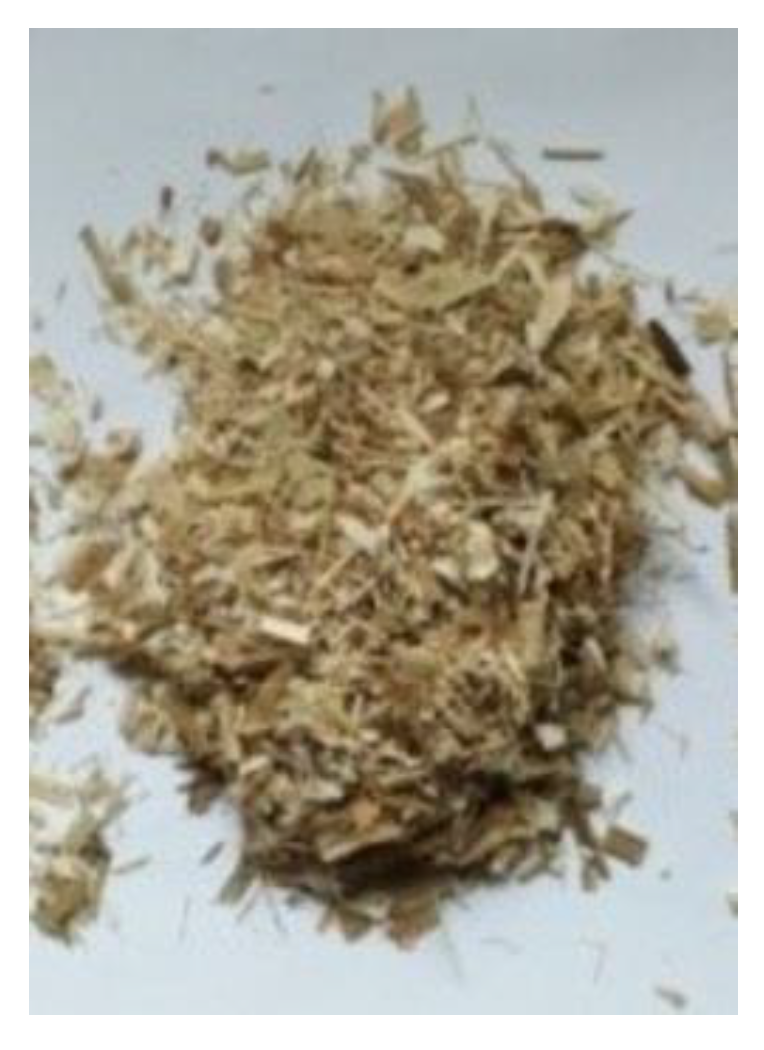
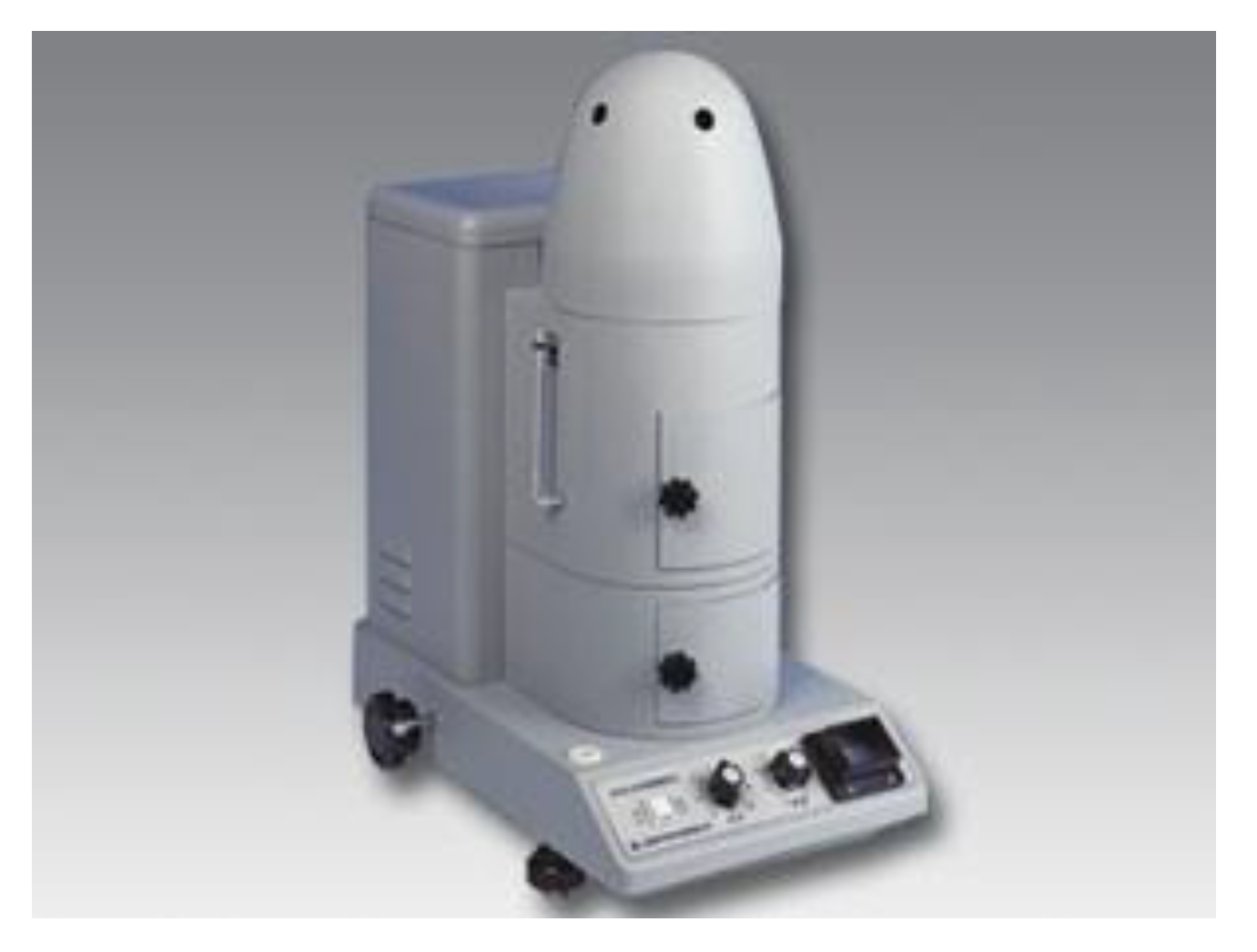
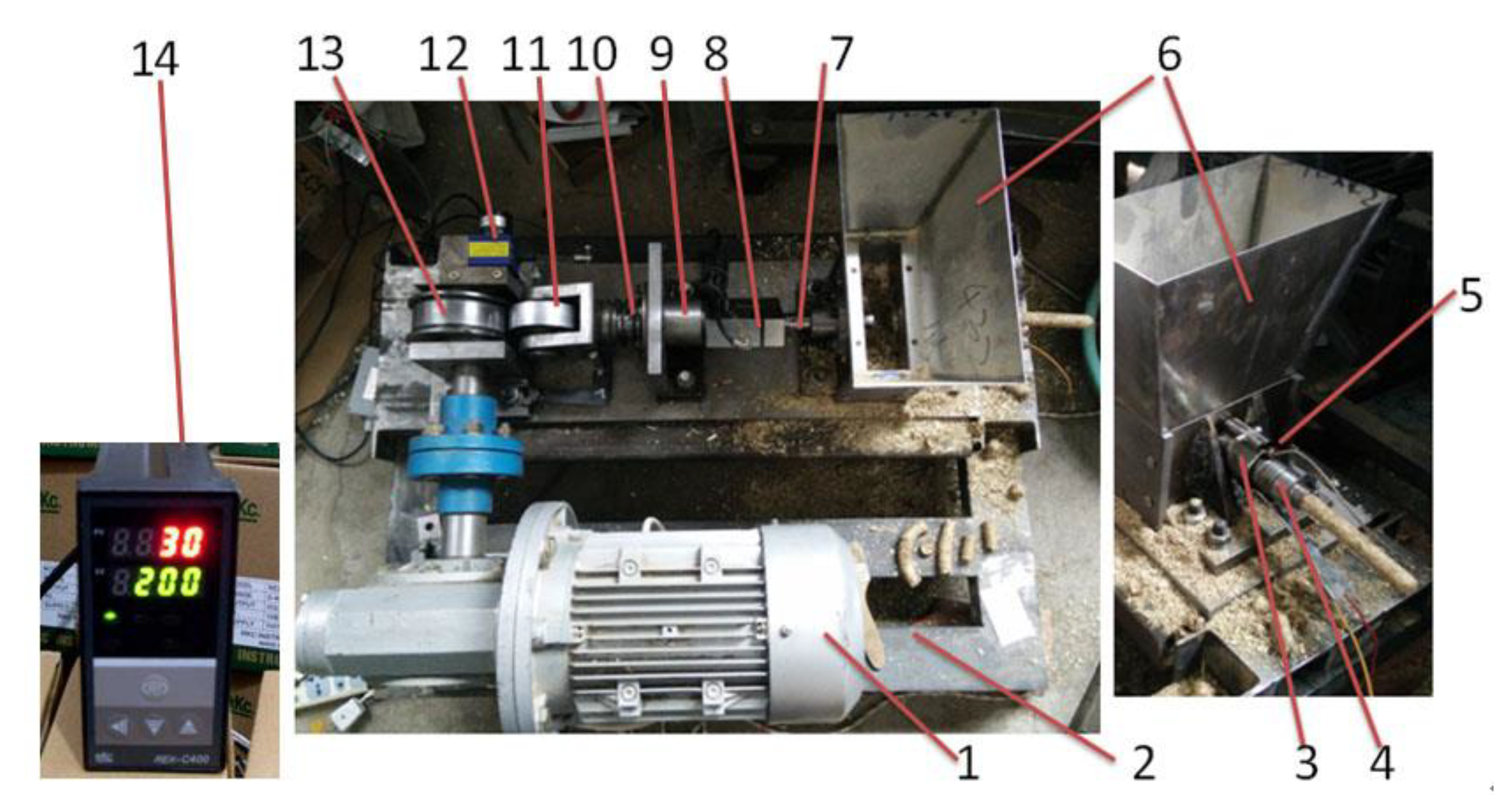
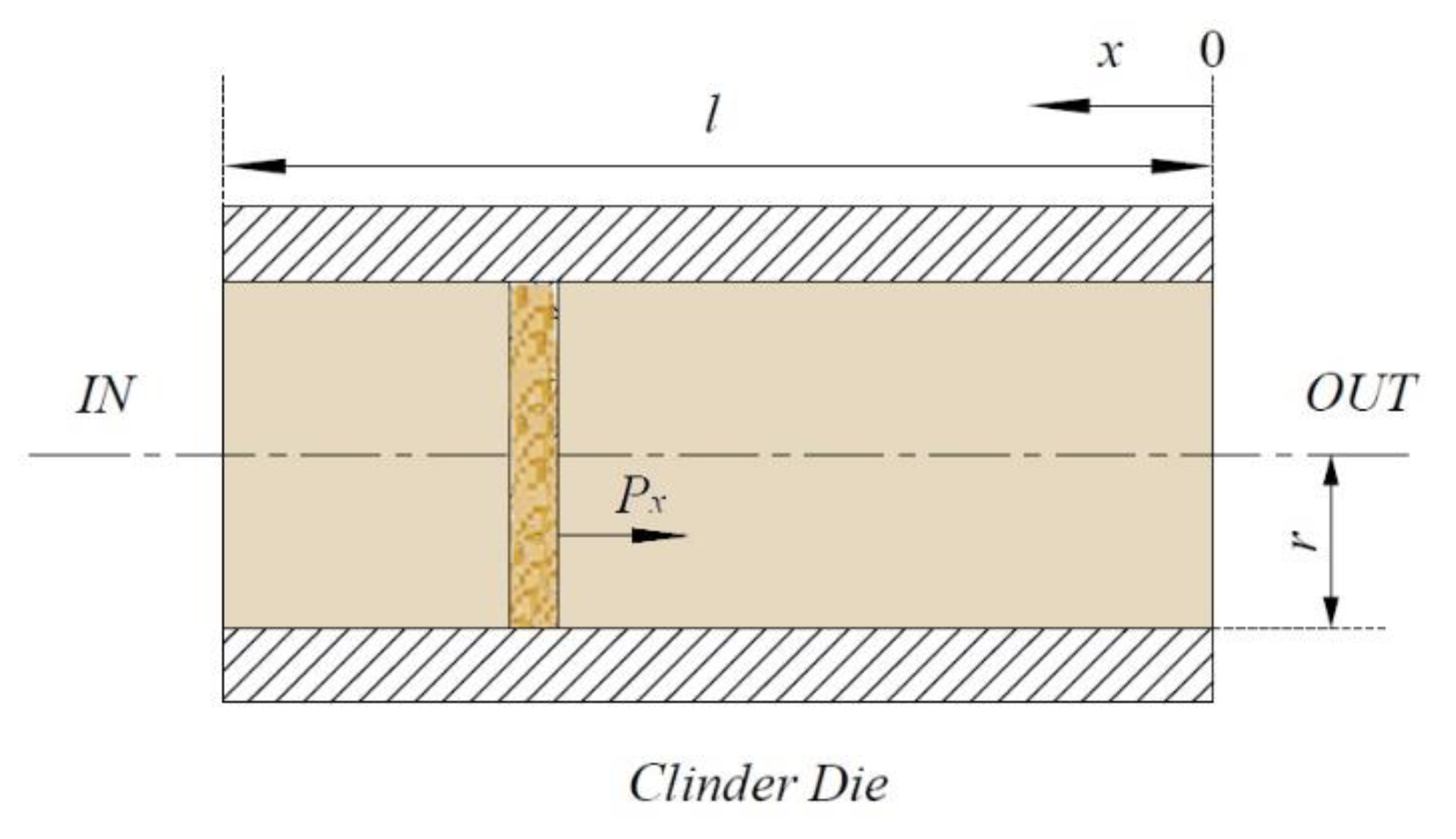

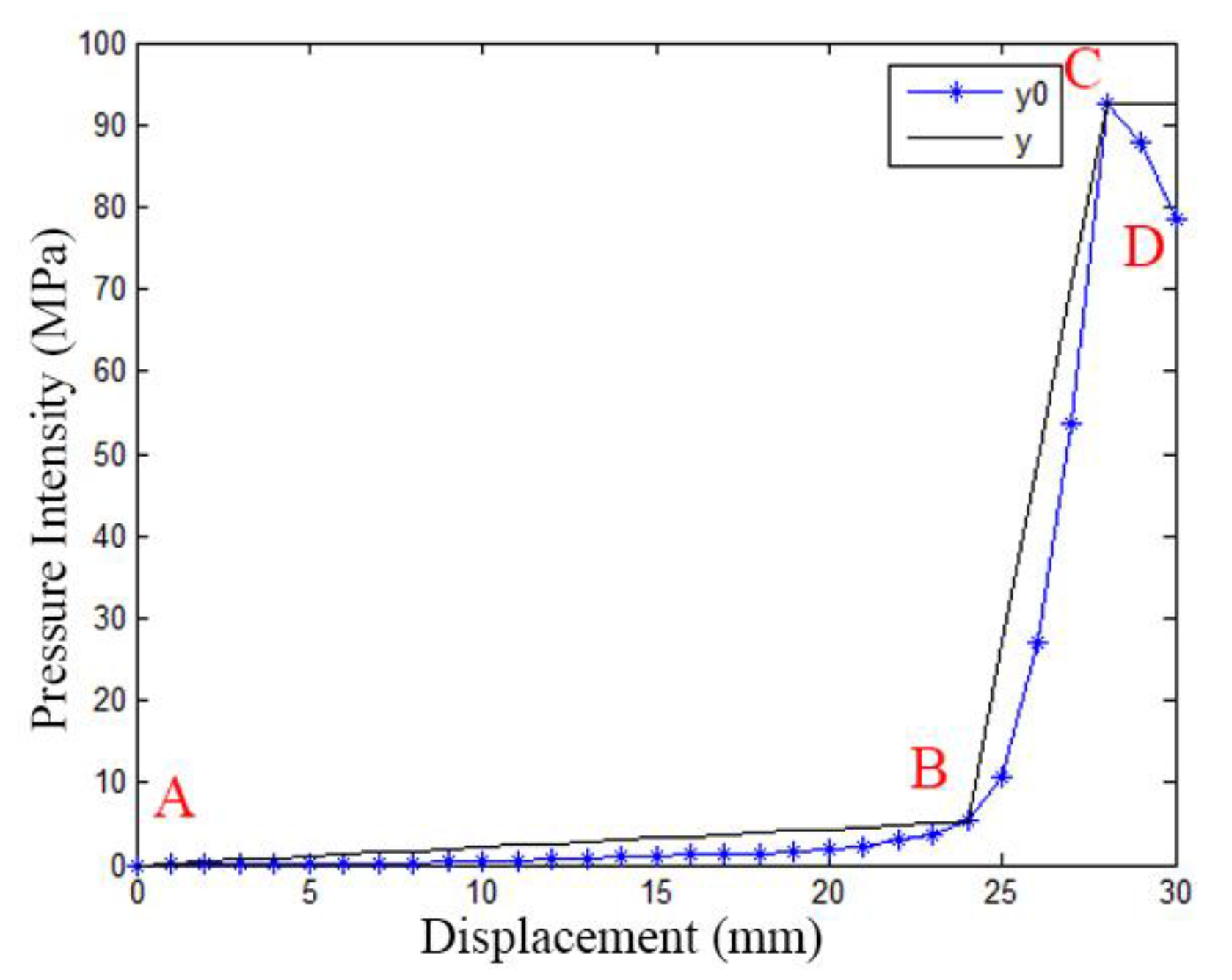
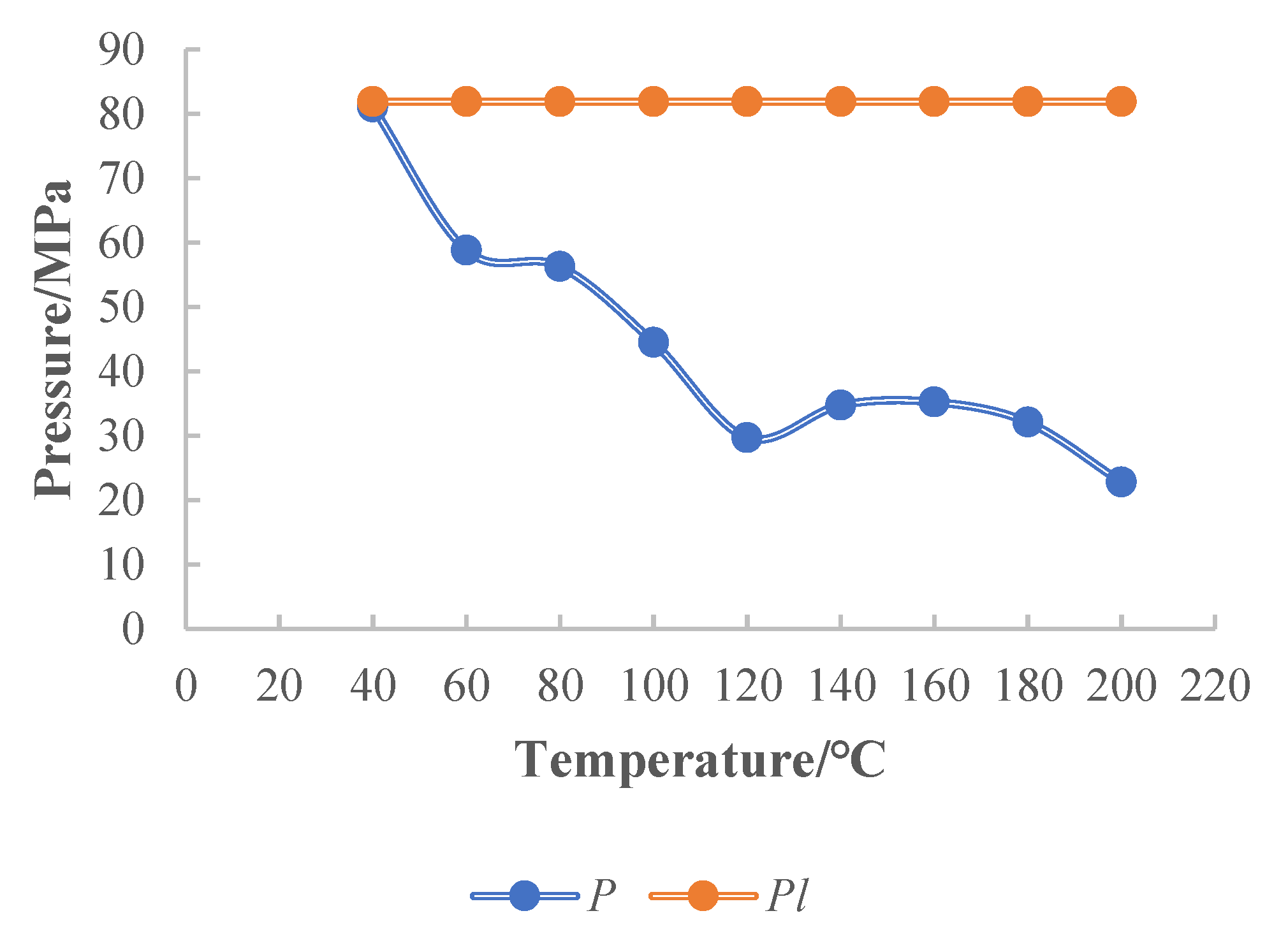


Publisher’s Note: MDPI stays neutral with regard to jurisdictional claims in published maps and institutional affiliations. |
© 2022 by the authors. Licensee MDPI, Basel, Switzerland. This article is an open access article distributed under the terms and conditions of the Creative Commons Attribution (CC BY) license (https://creativecommons.org/licenses/by/4.0/).
Share and Cite
Li, C.; Chen, Z.; Wang, Q. Effect of Temperature on Densification Pressure and the Unit Density in Production of Corn Straw Pellet with a Post-Heating Method. Energies 2022, 15, 842. https://doi.org/10.3390/en15030842
Li C, Chen Z, Wang Q. Effect of Temperature on Densification Pressure and the Unit Density in Production of Corn Straw Pellet with a Post-Heating Method. Energies. 2022; 15(3):842. https://doi.org/10.3390/en15030842
Chicago/Turabian StyleLi, Chengjun, Zhongjia Chen, and Qingchun Wang. 2022. "Effect of Temperature on Densification Pressure and the Unit Density in Production of Corn Straw Pellet with a Post-Heating Method" Energies 15, no. 3: 842. https://doi.org/10.3390/en15030842




